Lesley, thank you once again for all of the hard work and the great advice that is contained in this post. This will be a great resource for every ELA class that is trying to promote poetry during April and beyond. Please share widely with every English teacher you know.
MG/YA Verse Novels for National Poetry Month by Lesley Roessing
I had been invited by the principal of a middle school to facilitate book clubs with fifteen 6th, 7th, and 8th grade boys—all designated as “reluctant readers,” students who can read but choose not to do so. This activity, held for an hour every Thursday, was completely voluntary on the part of the boys. It was not a class; participants would not receive a grade. They were not missing a class to be there since book club reading and meetings were held during an end-of-day study-type period. Why they volunteered for the project, being a guest at the school I do not know—maybe the snacks or the promise of an activity at the end of a successful semester.
I have always felt that book clubs are the most effective way to engage reluctant readers in reading and reading more deeply since readers have some choice in what they are reading, they are reading to have the opportunity to talk with their peers, and they are reading more deeply to come to meetings with something to discuss. But primary to success, especially for reluctant readers, is giving them books they will read and find they want to read. The books I suggested for the school’s purchase for these particular students were House Arrest and Rhyme Schemer by K.A. Holt and The Crossover and Booked by Kwame Alexander. Meeting one day a week and having a short time for discussion and, more importantly, time to read, all the boys—students who admitted to never before finishing a book—read at least two, and most read three, complete novels by mid-April. And this reading and responding to bring reading notes to their meetings was in addition to their schoolwork.
ELL students may find verse novels easier to read for the same reasons—less dense text and shorter lines. Proficient readers find verse novels more lyrical and appreciate the artistry and the effectiveness of the line breaks.
| From Locomotion by Jacqueline Woodson Mrs. Marcus Says Line breaks help Us figure out What matters To the poet. Don’t jumble your ideas Mrs. Marcus says Every line Should count. |
Although I have listed novels alphabetically by author’s last names, I need to begin with the author who introduced me to verse novels with her wonderful memoir, Stop Pretending: What Happened When My Big Sister Went Crazy. I first met Sonya Sones when she talked about how she came to write about that topic and in verse and heard her read some of the poems, Through free verse the author captures the highs and lows of her thirteenth year from “My Sister’s Christmas Eve Breakdown” to her fantasy of coming “To the Rescue” to the heartbreak of her “February 15th” birthday spent in the hospital visiting her sister to the joy of spending “Memorial Day” alone with Father to playing scrabble “In the Visiting Room” after the situation and their adaption to it has become somewhat “BETTER.” When I read selected poems aloud to my students, I wished they could see the line breaks—I refer to Sones as the Master of Line Breaks—and would pause a microsecond shorter than a comma. After my students tattered our three copies of Stop Pretending, I purchased two copies of One of Those Hideous Books Where the Mother Dies and had to wait in line until June to snag a copy to read myself.
It is difficult to believe that anyone has not heard of Kwame’s Alexander’s The Crossover, the story of twin basketball players who behave like any adolescent brothers and then face a family trauma together. This verse novel has captivated reluctant readers, especially male, since its publication. Booked, is a the story of soccer, friendship, bullying, impressing girls, and the power of words. Twelve-year-old Nick has his own family problems to deal with and is mentored by one of YA literature’s most memorable characters, the rapping school librarian.
| Freakboyamzn.to/2GuHud5 by Kristin Elizabeth Clark Brendan has always identified with his birth-assigned gender. He lives as a male; he is an athlete, and he has a serious girlfriend. But during his senior year, Brendan realizes that he wants more, or wants different, and begins to question his sexuality and/or gender identity. When he meets Angel, a transgender woman, he finds someone who has suffered adversity and now is confortable with herself, demanding that others accept her as she is. Angel works at the Willows Teen LBGTQ Center and wants to provide Brendan, who is not a client, with the support he needs. Brendan’s girlfriend Vanessa now worries what she is since she loves Brendan who says he is trans. Told through three perspectives, this verse novel gently examines gender fluidity and leads readers through Brendan’s, Angels’s, and Vanessa’s stories. The author includes few shape (concrete poems) as well as an interesting technique where the last word of stanzas, read vertically, create their own messages. |
| Moo by Sharon Creech Reena, Luke, and their parents move from the big city to rural Maine where Reena and Luke are volunteered by their parents to take care of their eccentric neighbor’s cow (and pig, cat, and snake). The story is delightful, but it is the text that will grab the reader’s interest. The story is written in prose, and all types of poetry—free verse, shape poems, and there might have been some rhyming poetry. And the author plays with script and fonts and spacing to enhance the story—as on page 29, Flies dipped here there and and page 61, and the f l u t e m u s i c drift ing d o w n and then abruptly stopping. Readers will examine not only how relationships are portrayed but the effectiveness of style and punctuation choices. |
| We Come Apart by Sarah Crossan and Brian Conaghan I fell in love with Jess and Nicu as they fell in love with each other. Both teens have reasons to escape; Nicu is an immigrant, and Jess comes from a violent home. This is a story about bullying, racism, cultural values, abusive parents, but most of all it is the story of building a friendship—standing up for others and putting them first. There are two characters and two authors—and an unfortunately realistic ending and powerful message. Two authors, two voices. I also recommend two other verse novels by Sarah Crossan: The Weight of Water, about an adolescent immigrant with a broken family. Kasienka and her mother emigrate from Poland to England to find the father who has left them. She discovers prejudice in her middle school but also a new family and a new friend. In this novel Crossan makes an important point of many teachers who choose to ignore bullying in their classrooms and bullied students who don't know what to say when one finally intervenes. And One, the story of conjoined twins, told from the viewpoint of one of them, about love, sharing, and an impossible, critical choice. |
I usually choose books about more contemporary issues but am noticing the same issues appear throughout history, wearing different masks. Unfortunately oppression, intolerance, and treatment of refugees have not ended, and we still need people unafraid to stand for their own rights and those of others. Audacity relates the true story of Clara Lemlich, a Russian Jewish immigrant with dreams of an education who sacrifices everything to fight for better working conditions for women in the factories of Manhattan's Lower East Side in the early 1900's. Lyrically related in verse, the use of parallelism and the purposeful placement of the words is as effective as the words themselves. The novel includes the history behind the story and a glossary of terms, a wonderful "text" for a social studies class. Readers not only learns the story of Clara Lemlich but experience the trials of the factory workers in NYC’s garment district and the obstacles Clara surmounted as she fought to organize the women to fight for their rights.
An Uninterrupted View of the Sky by Melanie Crowder (historical fiction)
This novel takes place in Bolivia at the beginning of the 21st century and reveals how the United States’ role in the passage and enforcement of a law that violated the rights of citizens, especially the poor and indigenous peoples, led to innocent families living in prisons for years, hoping for the reform that has been slowly occurring. “Our lives are stretching out before us, unplanned and unpredictable” (p. 277). Readers meet Francisco and his little sister Pilar and Francisco’s classmate and new friend Soledad, who become a part Bolivia’s prison children population. As they struggle to survive the violence of prison life and the streets and loss of family, they realize that education can help them make a change. The readers learns about Francisco and Papa through their poetry.
| Forget Me Not by Carolee Dean One of my favorite verse novels is Forget Me Not, not only for the storyline, which will generate important conversations among teens about cyberbullying, shaming, and suicide, but for the format. Dean creatively employs a variety of poetic forms—villanelle, pantoum, cinquain, tanka, shape poems—and meter, as well as script writing to identify the characters and alter the mood of the plot so subtly and artistically as to not disrupt the reading and the reader. In response to a compromising photo of her that is texted throughout her high school and the resulting shaming by her peers, Ally commits suicide —or so she thinks—as her only way out. A friend tries to save her by showing her that her life has value and that she can make the decision to live. |
| Somewhere Among by Annie Donwerth-Chikamatsu Ema is binational, bicultural, bilingual, and biracial. Some people consider her “half,” and others consider her “double.” Her American mother says she contains “multitudes,” but Ema sometimes feels alone living in Japan somewhere among multitudes of people. When fifth-grader Ema and her mother go to live with Ema’s very traditional Japanese grandparents during a difficult pregnancy, readers experience six months (June 21, 2001-January 2, 2002) of customs, rituals, and holidays, both Japanese and American. There are challenges, such a choosing a name for the new baby that will bring good luck in Japan and that both sets of grandparents can pronounce. Ema celebrates American Independence Day and Japanese Sea Day, and she now views some days, such as August 15 Victory Over Japan Day from diverse perspectives. On September 11, 2001 she experiences both two typhoons in her town and the attacks on the World Trade Center and the Pentagon in America on television. As the reader traverses the intricacies of two fusing two distinct cultures with Ema and her family, our knowledge of others is doubled. |
| One reason we read is to experience other cultures, times, and places. With diplomatic relations between the US and Cuba recently restored, it is crucial that our children learn more about its history, culture, and people. And what better way to learn than through the provocative, well-written, diverse verse novels written by Cuban-American author Margarita Engle. Enchanted Air: Two Cultures, Two Wings: A Memoir by Margarita Engle (memoir) Through this memoir in verse, the narrative of Engle’s childhood as a Cuban-American growing up in LA during the 50’s and 60’s, readers can experience the challenge of children torn between cultures and, and learn about the Cold War. The Lightning Dreamer by Margarita Engle The story follows feminist Gertrudis Gomez de Avellaneda, known as Tula from 1827, from when she tells us that “Books are door-shaped portals…helping me feel less alone” to 1836 where she begins the first of her books to spread her hope of racial and gender equality. As a girl, Tula reads in secret and burns her writings as reading and writing are unladylikes. A13 she is nearing the age of forced marriage, and her grandfather and mother make plans to barter her for riches. The reader follows Tula through Engle’s beautiful verse as she writes plays and stories to give hope to orphaned children and slaves; refuses not one, but two arranged marriages; falls in love with a half-African freed slave who loves another; and at last independent, moves to Havana to be healed by poetry and plans the writing of “a gentle tale of love,” a story about how human souls are “free of all color, class, and gender,” an abolitionist novel written by the real Tula to spread her hope of racial and gender equality. Tropical Secrets: Holocaust Refugees in Cuba by Margarita Engle (historical fiction) I have read many Holocaust novels and memoirs of diverse people in diverse situations set in Europe but had not read about the Jews who sought refuge in Cuba. In Tropical Secrets, Engle shares the intertwined stories of Daniel, a young boy who is a German-Jewish refugee, unwittingly arriving in Cuba in 1939, of Paloma, a Catholic native teen surviving a mother who left and a father who is profiting from the refugees, and of David, a Jewish refugee who fled the pogroms, both serving as Daniel’s (and the readers’) “guides” to island life. Interestingly, I found the verse grow smoother and more lyrical as David adapts to Cuban culture. This book is even more relevant today as xenophobia grows, no longer allocated to specific places or times. It is important that our children learn A refugee, not a spy. Still, there is the terror of being questioned by police… it will help them understand that those who feel safe today could be the ones in need of refuge tomorrow |
| Between the Lines by Nikki Grimes Grimes’ newest publication is a prose novel where poetry is employed so the readers (and the other characters) can be introduced to the characters. Why do we read and write poetry? “Because poetry, more than anything else, will teach you about the power of words,” says Mr. Winston, the librarian, as he explains to Darrian why he should learn about all sorts of writing, even poetry. And Grimes shows us the power of words—to heal, to strengthen, to discover. Like Bronx Masquerade, this novel takes place in Mr. Ward’s English classroom where he holds Open Mike Fridays and students work towards a Poetry Slam. Mr Ward’s eleventh grade class is a microcosm of the outside world—Black, Brown, and White and maybe in-between. The reader views the eight students through the lens of Darrian, a Puerto Rican student who lives with his father and has dreams of writing for The New York Times because, “Let’s face it, some of those papers have a bad habit of getting Black and Brown stories wrong.…But I figure the only way to get our stories straight is by writing them ourselves.” So Darrian joins Mr. Ward’s class to learn about words. He does learn the power of words, but he also learns about his classmates as they learn about each other and about themselves through their narratives, their free writes, and the poetry they share. These students, as the students in our classrooms, are more than their labels. As Tyrone explains about his class the year before, “Before Open Mic, we were in our own separate little groups, thinking we were so different from each other. But when people started sharing who they were through their poetry, turned out we were more alike than we were different.” And Darrian finds out that each word can be unique and special, as Li says about poetry, but also a newspaper story “can be beautiful, especially if it’s true.” Truth is what these characters and novel reveals. Garvey’s Choice by Nikki Grimes This short novel is the story of Garvey, an adolescent who doesn't fit the expectations of his father who wants him to become an athlete and or his classmates who bully him. Through a good friend, he discovers his own special talents by joining the school chorus. Written in tanka, Garvey's Choice is a journey of discovery and identity that will give hope to many readers who need to find their own strengths and will help those who already have to gain empathy for others. |
| Full Cicada Moon by Marilyn Hilton One my favorite female adolescents in literature is Mimi, a biracial—half Japanese-half Black—who therefore faces racial prejudice and sexism from her peers, a friend’s parent, and teachers. The year is 1969; Neil Armstrong will be walking on the moon, and Mimi plans to become an astronaut. She enters the 8th-grade Shop class in her Vermont school and is told that “Shop is for boys; Home Ec is for girls.” Sensing she needs this education for her future profession, she persists—and is suspended. When Mimi returns to school, her female classmates join her in a Shop class sit-in. As a biracial feminist fighting stereotypes, Mimi serves as a beneficial role model for teen girls and will provide a mirror and map for some and hopefully a window for others. |
What happens when a good kid does a bad thing for a good reason? This question hooks readers every time, as does this novel which is one reason why this is one of my top favorite MG novels and one of my very top recommendation for reluctant readers—this moral question and these characters. Timothy steals a wallet to help with his baby brother’s medical expenses; he is arrested and put on house arrest for a year. This novel is the journal he keeps for his probation officer and his court-appointed counselor. As Timothy tries to help his overworked mother, keep his brother safe, and find the solution to Levi’s medical problems, the reader falls in love with him as well as the cast of characters involved in his life. As medically-fragile Levi safety is the rationale for all decisions made by Timothy, he again, at the end, becomes a victim of what-happens-when-a-good-kid-does-a-bad-thing-for-a-good-reason.
Knockout by K.A. Holt
A sequel to House Arrest, Levi is now in 7th grade and trying to make his own life and find the self who is no longer a victim of illness and an overprotective family. Despite a loving mother, big brother, and a good friend, Levi is more self-centered than Timothy was, but he feels he needs to be able to become his own independent person—which he does in a new passion for boxing. He finally convinces his mother and the now 24-year-old Timothy to let him have his chance as he learns more about Timothy's sacrifices and the true motives of the father-who-left. Through his indomitable spirit, he wins over the reader. Knock Out is advertised as a companion novel, rather than a sequel, to House Arrest, but since I already have the background from the first novel, I cannot evaluate how effective it would be to read it alone or first. It probably work well if students were paired to read the two novels (or half the class read each).
Rhyme Schemer by K.A. Holt
Kevin is a bully—bullied by his family—and in a school with a Zero Tolerance policy he cannot be caught again. Therefore, two things happen: Students who he bullied now bully him, and Kevin bullies kids through blackout poetry; he tears pages out of the classics from the library and posts his poetry. The librarian discerns his talent and helps him gain self-respect. This novel will engage reluctant readers through its topic, length, and format and will lead to discussions on a variety of issues relevant to the lives of middle-school boys: middle school, bullying, family relationships, peer relationships, and the roles of educators and administrators.
“The bigger the issue, the smaller you write.”--Richard Price. Instead of focusing on the overwhelming statistics generated by the March 11, 2011 earthquake and resulting tsunami in Japan—nearly 16,000 deaths and 3,000 people missing—the event becomes even more intense and compelling as author Leza Lowitz relates the story of one town and one boy and the resilience of many.
The story begins on March 11 when Kai, a half Japanese, half American 17-year-old and his teachers and classmates experience the “jolting of the earth,” and as trained, they evacuate, running for their lives, looking for the highest place, as their town is destroyed. Written powerfully in free verse, the reader feels the fury of nature as the water “churns,” “thrashes,” “surges,” “sweeps,” “charges.” Kai ends up in a shelter having lost his mother, his grandparents, and one of his best friends. His father left years before to return to America.
Faced with overwhelming loss and trauma, Kai walks into the ocean but is saved by one of his classmates and convinced to accept the opportunity to go to New York City on the tenth anniversary of 9/11 where he will spend some time with young adults who lost their parents as teens in the 9/11 attacks. At Ground Zero, Fia tells him, “Bravery means being scared and going forward anyway.”
Kai hopes to find his father in NYC but returns to his village to help the young adolescents who lost their families and to rebuild his town. “I want to be/ like that tree/ deep roots/ making it strong/ keeping it/ standing tall.” And it is to his roots Kai returns and stays—“The quake moved the earth/ ten inches/ on its axis./ I guess/I shifted,” too.”
| Every Shiny Thing by Cordelia Jensen and Laurie Morrison In this new multi-genre novel readers follow the journey of two new friends from different types of lives as they discover themselves and how they can navigate their lives. Lauren is a wealthy teen who goes to a Quaker school. She is very close to her brother Ryan, but when he is sent to a boarding school for teens on the autism spectrum, Lauren is sure that he isn’t happy, that the school is not meeting his needs, and that her parents sent him away. She then realizes that all teens who need it can’t afford the help Ryan is getting and she designs a scheme to raise money, selling the “shiny things” that she feels her affluent family and friends don’t really need. Her scheme spirals out of control as she begins stealing items from stores, family, and friends, selling them on line, and the thrill of stealing takes over. She even involves her new friend Sierra. Sierra’s father, a drug addict, is in jail; her mother, an alcoholic, who Sierra has cared for for years in a life of poverty, is also in jail. What she wants is her family; what she needs is a stable loving family—and a friend, but not a friend who gets her involved with her own addiction. Sierra moves in next door to Lauren with foster parents Carl and Anne, an interracial Quaker couple who are surviving the trauma of losing their own child. She pushes them away, anxious to get back to her old life. Sierra and Lauren’s friendship guides them in finding a new way of thinking. Sierra realizes she can love her mother but she can’t help her, and she can let Carl and Anne help her. Lauren realizes that she can stop worrying about Ryan who is happy in his new environment and she can’t save the world. Lauren’s and Sierra’s narrations are written by each of the authors in their own unique style: Lauren’s narratives in prose and Sierra’s in free verse, styles which fit their lives and personalities. |
| The Way the Light Bends by Cordelia Jensen Jensen's newest verse novel, like her first verse novel Skyscraping, is the story of relationships and the ways "the composition of a relationship changes as we change individually." (p.380) Though they used to be "in tempo/ in time" (p. 4), sisters Linc and Holly in their sophomore year are following "two paths/ one in light/ one in shadow/ diverging." (p. 5) They have different skills and talents—and different dreams. Holly, though adopted, appears to fit more easily into the family and consistently wins her parents approval; she is academically gifted, athletic, and a school leader. Linc is artistic, creative, a photographer. As the narrator of the story, the reader feels Linc's pain as she tries to be a better student and daughter while following her passion but she constantly fails—at academics, at love, and, it seems, at being the daughter her parents want. As her photography improves, the rest of her life falls apart—and she makes some wrong choices and turns. It takes a family secret and truthful sharing to make them all realize that "a family isn't something you're born into as much as it is something you chose to be a part of every day." (p. 370) |
| Long Way Down by Jason Reynolds In Will’s neighborhood there are three rules: you don’t cry; you don’t snitch; you get revenge. When he older brother Shawn was shot and killed, Will takes Shawn’s gun to avenge his murder because he is sure he knows the story—well, he is almost sure. As he takes the elevator down, it stops on each floor where someone who has been killed in gun violence gets on and shares their story, and he learns that everything is not always as it seems. What will he do with this information? Samuel Taylor Coleridge wrote "Poetry: The best words in the best order." Jason Reynolds’ first verse novel proves that, maybe more than any verse novel I have read. In this powerful work, every single word, punctuation, and spacing counts. It is a perfect novel for reluctant readers because, even though the words are simple to read, the story generates inference, prediction, making connections re-reading, and employs all the reading strategies necessary to a good reader. It also brings up ideas of loss and retaliation and where, or if, we can break the chain of violence and who makes that decision for us. This novel takes the reader a long way down—in the space of a minute. |
Emerson Elementary is closing at the end of the year. As readers live through that last year with the eighteen fifth graders and experience their changing peer and family relationships through their poems, they learn who is for and who is against the upcoming change. Each student has his or her unique poetry style and voice, and readers truly experience the diversity of poetry and one lovable class whose poems move the year along.
Red Butterfly by A.L. Sonnichsen
Another well-written novel which I devoured in a day (with the help of a box of tissues), Red Butterfly relates the story of Kara, an abandoned baby of Tianjin, who was raised by an American woman (Mama) who gave up everything—husband, daughter, grandsons—to illegally stay in China to raise her. After Kara finds she was never legally adopted and has no government identity and Mama is deported, Kara is returned to the orphanage and is adopted by another American family as Mama is too old to adopt under the rules. However, Kara learns that one can have many families, and there is room in people's heart for one more child.
| Forget Me Not by Ellie Askeroth Terry Seventh grade is hard to navigate, even when you are not different. Jinsong is the president of student body, and even though he has faced prejudice in his past, he is now one of the popular kids. When Calliope June moves in next door, with her weird clothing and tics, he immediately likes her. But does he like her enough to risk his standing with his "friends," who are bullying Callie and some of whom have turned on him in the past? Callie has moved ten times during her life—every time her mother finds and breaks up with a new boyfriend. Diagnosed with Tourette syndrome, it is hard enough to fit in and make friends, especially since her doctor told her it would be better not to tell anyone. So Callie dresses to draw attention to her clothes and tries to hide her Tourette's (which only backfires) as she desperately tries to make friends—until she meets Jinsong and Ms. Baumgartner, the school counselor. Callie moves for an 11th time, leaving a legacy of tolerance and acceptance, at least between Beatriz and Jinsong—and ready to share her whole self with her new friends. "Because wouldn't/ talking/ about something/ make it better understood?" The reader learns about Callie, her past, her present, her future dreams, through her free-verse chapters and about Jinsong through his short prose. This is a perfect novel for reluctant readers as it is very short but leaves much to discuss (and contains both a male and female main character). Author Ellie Askeroth Terry's shares her own experience in this debut multi-genre novel. |
| Orchards by Holly Thompson According to the National Center for Education Statistics and Bureau of Justice Statistics, 28% of U.S. students in grades 6–12 experienced bullying. In surveys, 30% of young people admit to bullying others. In addition, a study in Britain found that at least half of suicides among young people are related to bullying and that 10 to 14 year old girls may be at even higher risk for suicide. As the social hierarchy intensifies in middle school, girls form cliques and can get meaner. Kana Goldberg, an American middle school girl, feels guilty when Ruth, a classmate, commits suicide. Kana reflects on the social hierarchy in her eighth grade class who were “electrons/ arranged in shells/ around Lisa/ Becca and Mona/ first shell solid/ the rest of us/ in orbitals farther out/ less bound/ less stable/ and you/ in the least stable/ most vulnerable/ outermost shell.” Lisa was mean to Ruth and “we all/ followed/ her lead.” Kana’s Japanese mother and Jewish American father send her to her maternal grandmother’s mikan orange farm for the summer to “reflect in the presence of [her] ancestors.” While there she learns to farm, becomes part of the family and community, and learns the rituals of her Japanese culture, but most important she reflects on her actions and those of her clique and thinks about Ruth and what happened and where to place blame because they didn’t understand her. She finally realizes that the list of what they didn’t do, what they could have done “…seems so basic and short.” There is another tragedy and through the rituals surrounding death Kana practices with her relatives and the Japanese community, she returns home with ideas of ways to create a memorial to the friends who were tragically affected by the bullying—and to help, not just the girls but the entire 8th grade class, to “go on.” |
This novel is a poetic and inspiring story of adolescent resilience. Veda is a young Indian dancer who, after winning a dance contest, is in an accident and loses her leg below the knee. But she never loses her will to dance and refuses to settle for less than relearning the complicated classical bharatanatyam dance form. As she begins again with the help of Govinda, a young teacher and friend, she learns the meaning of dance.
And last is a novel that is not yet published but includes some of the most effective use of poetry to relate the story of one of its characters, Breakout by Kate Messner
Breakout is the story of Wolf Creek and three weeks in the life of its citizens. As students finish school, write letters for the time capsule for the future citizens of Wolf Creek, and plan for Field Day, two prisoners escape, and for the next three weeks the life of the town is “different.” Police and reporters invade the town; fear is in control. Seventh-grader Nora, as a time capsule reporter, notices that life is more complex—or maybe she is becoming aware of the complexities. Nora writes at the end of the summer, “…sometimes you need to hear a lot of points of view to get the whole story.” (And that’s what this novel provides—lots of points of view revealed through letters, recorded conversations, text messages, news articles, the school’s morning announcements, and student petitions.
In this frequently-humorous novel there are serious lessons to be learned: Elidee finds her voice, Lizzie learns about forgiveness; and Nora contemplates the complications of life which includes racism that she never realized existed in her small town.
References for Reviewed Books and for Other Highly-Recommended Verse Novels
click on the image below for more information about Presenters
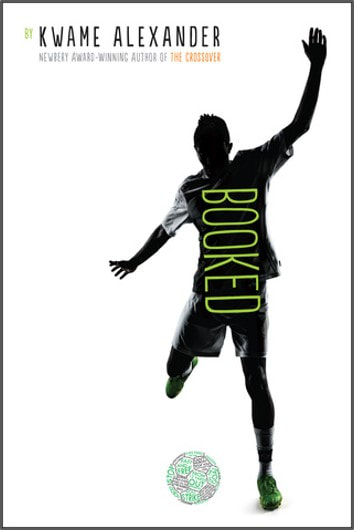
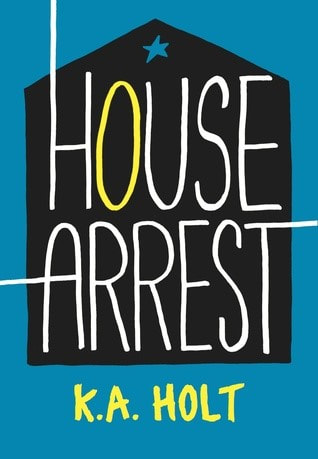
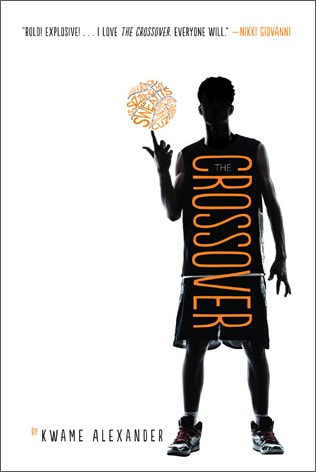
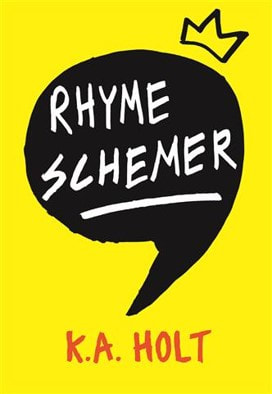
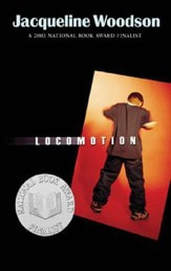
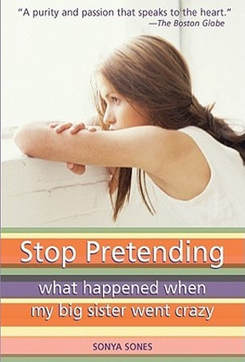
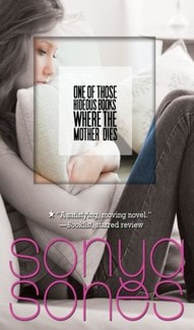

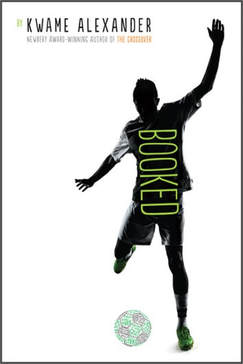
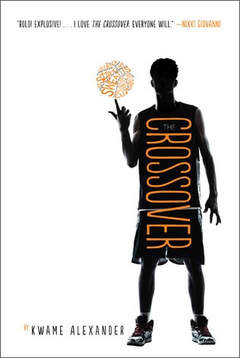
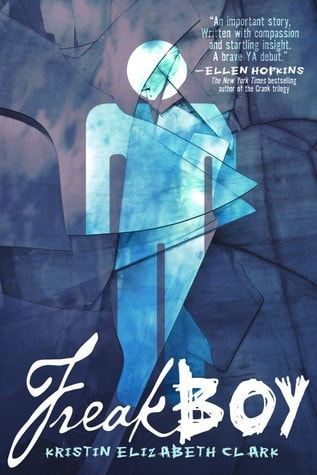
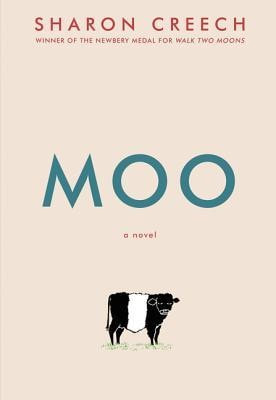
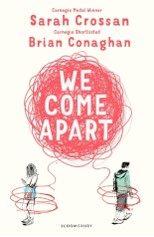
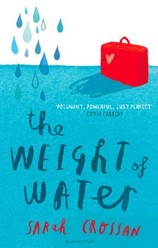
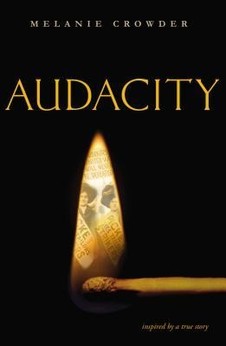
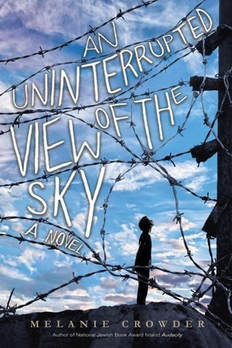
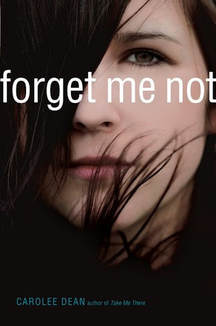
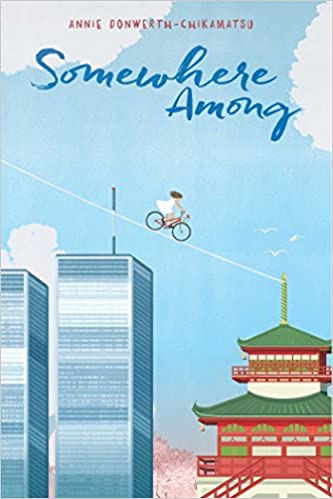
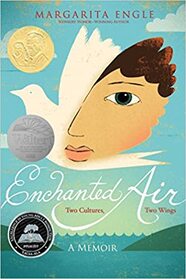
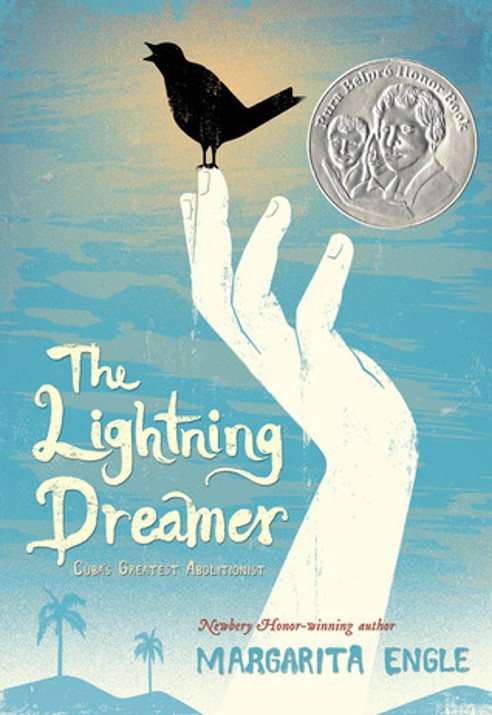

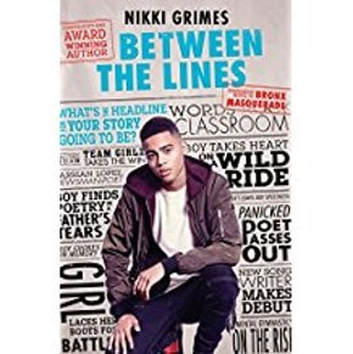
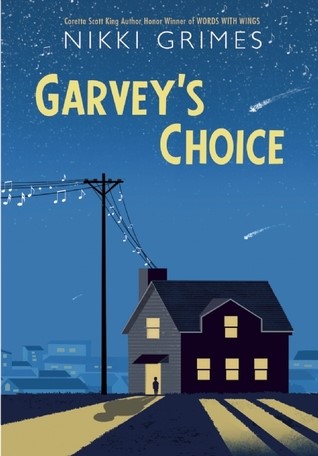
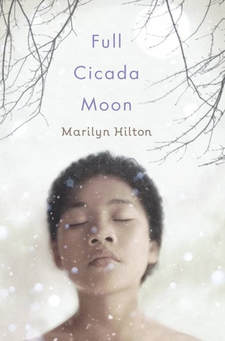
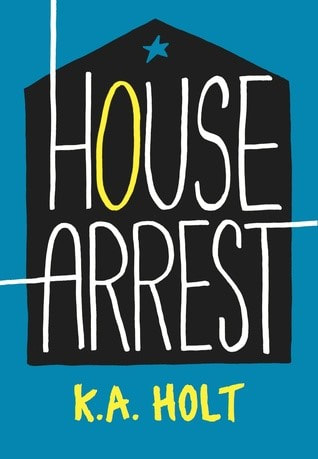
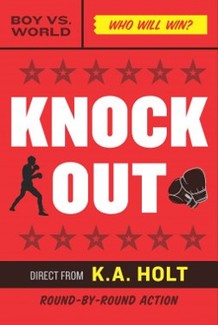
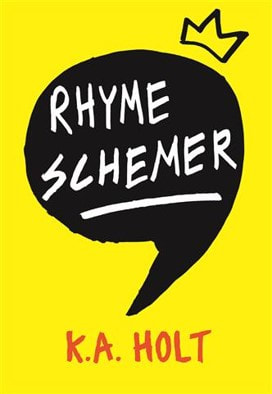
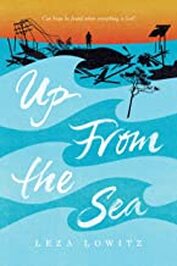
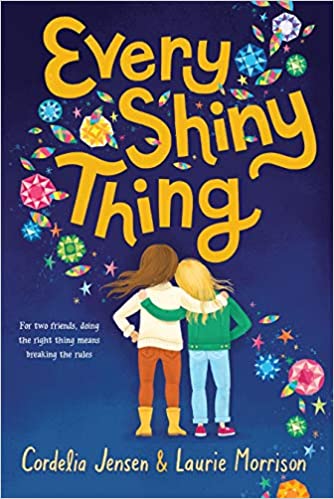

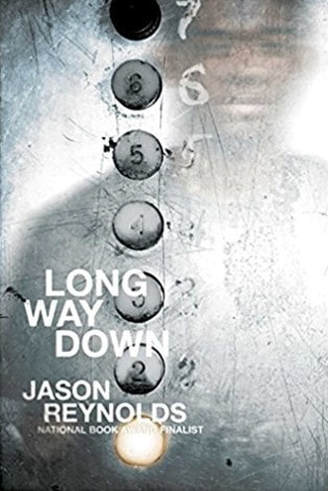
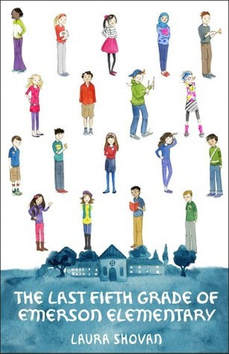
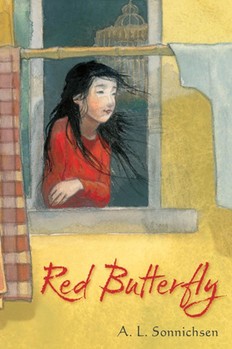
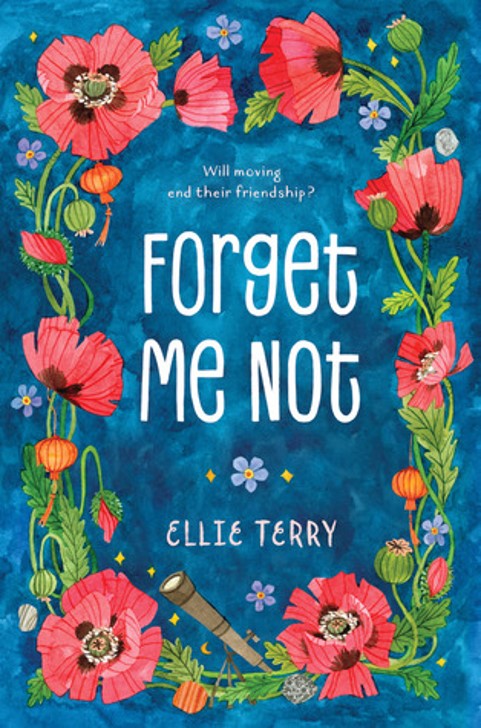
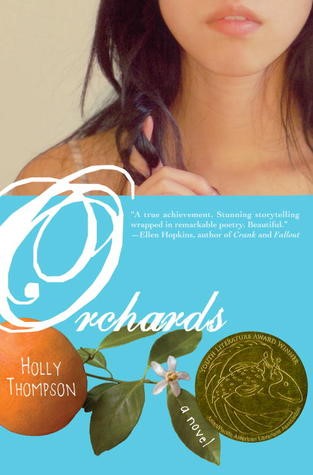
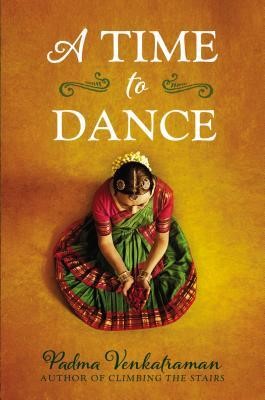
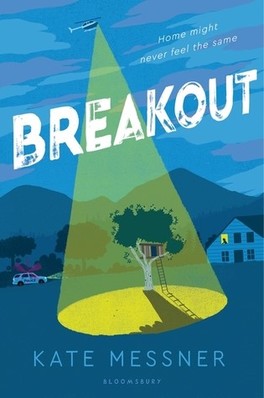
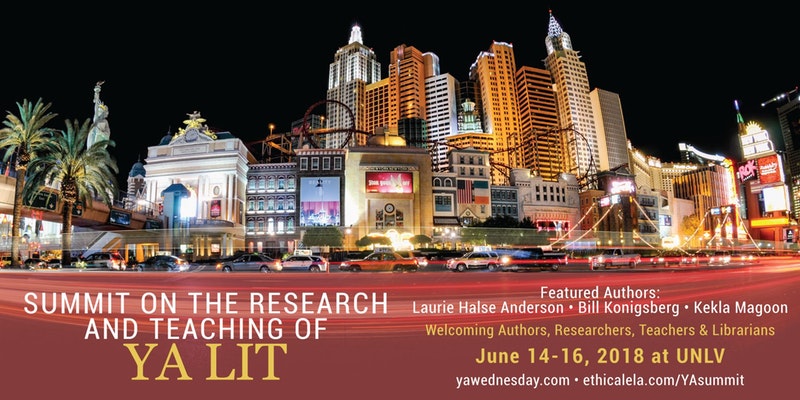

 RSS Feed
RSS Feed